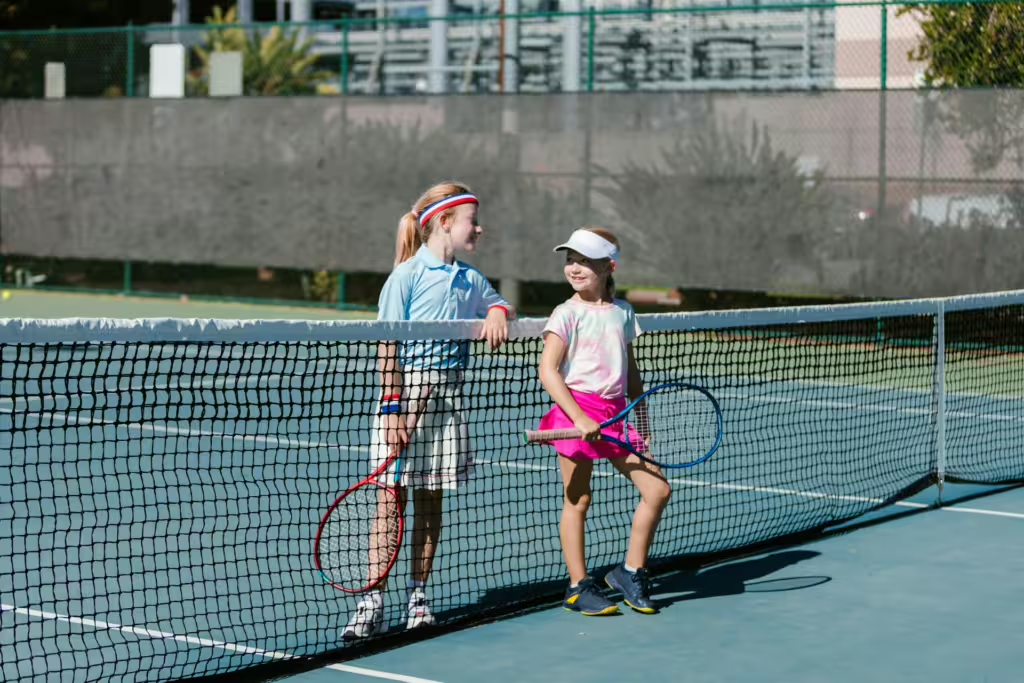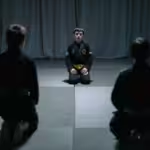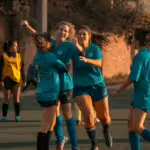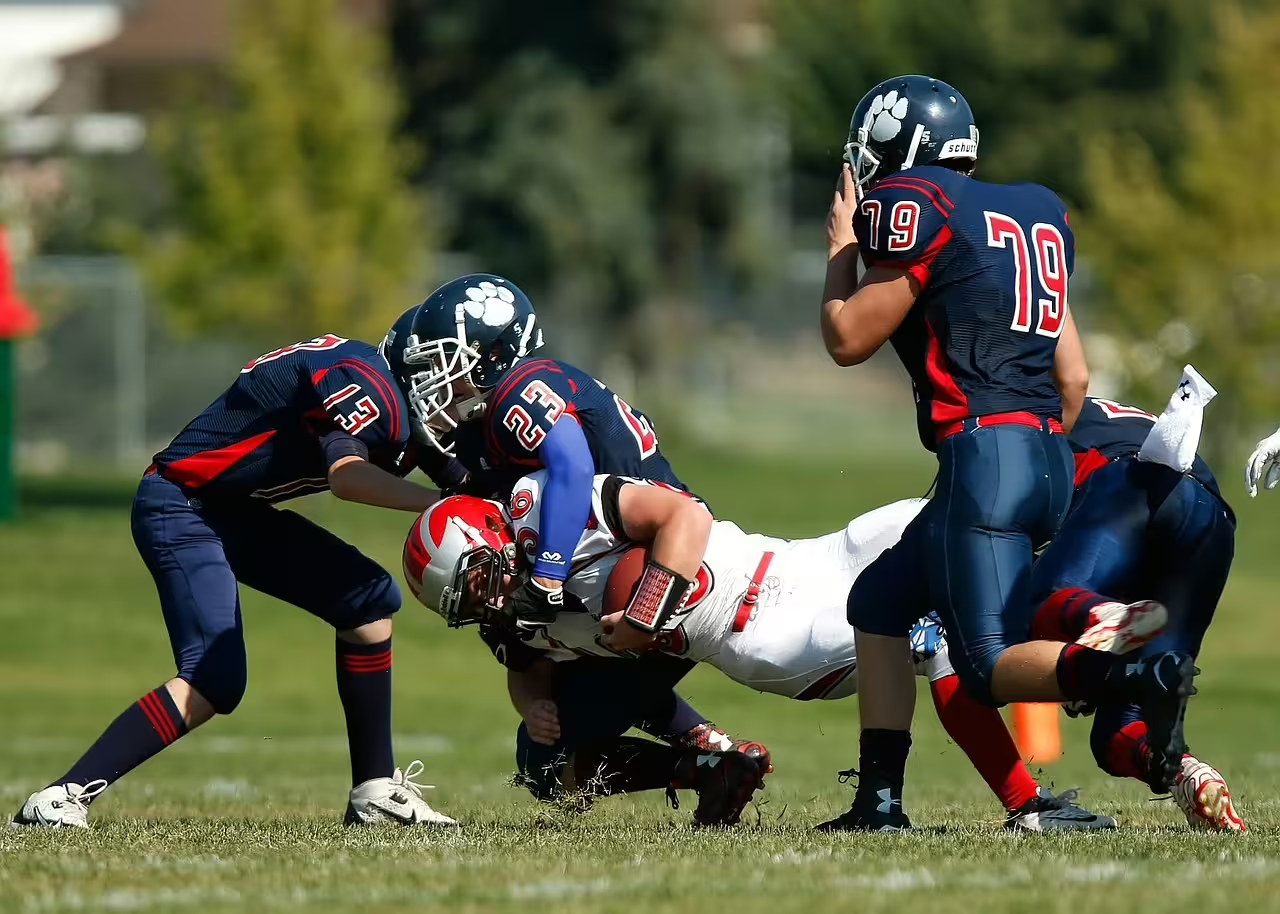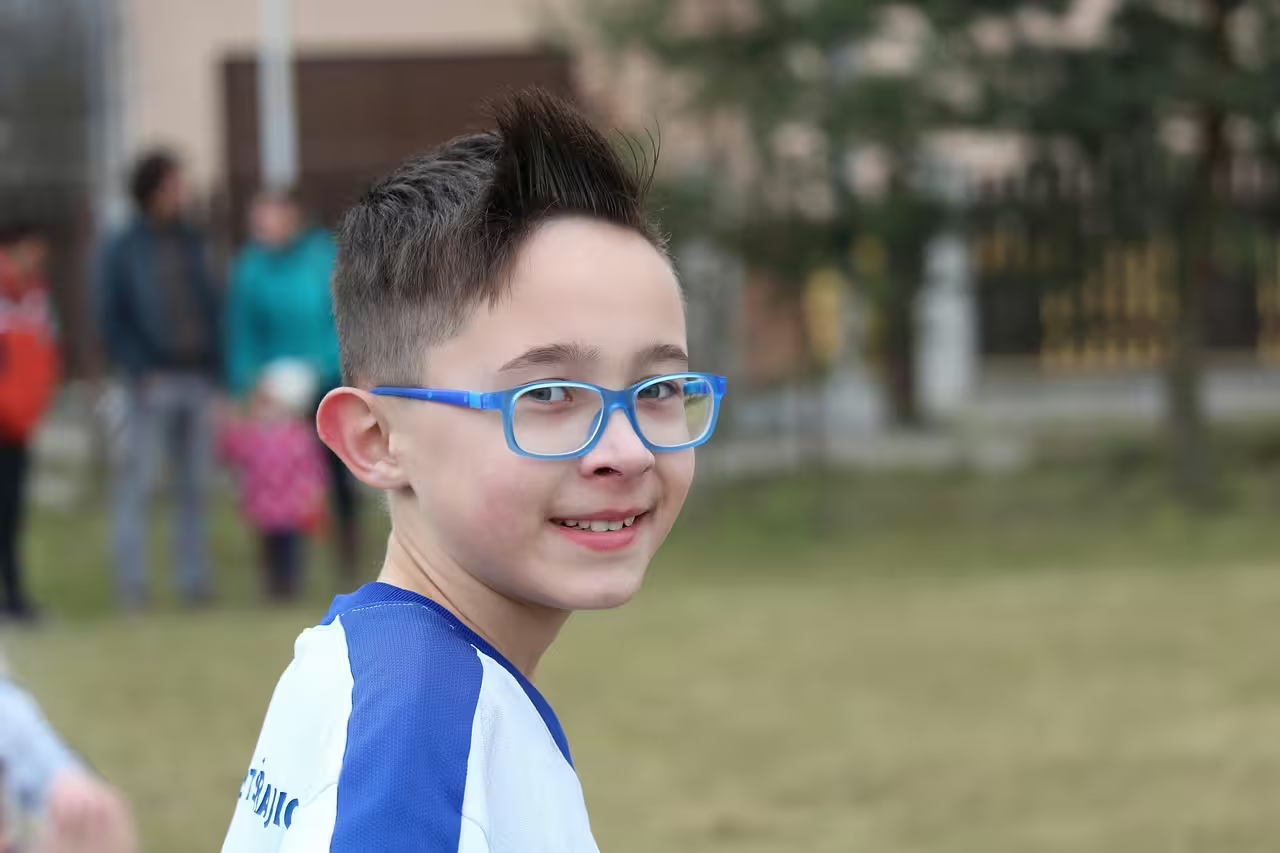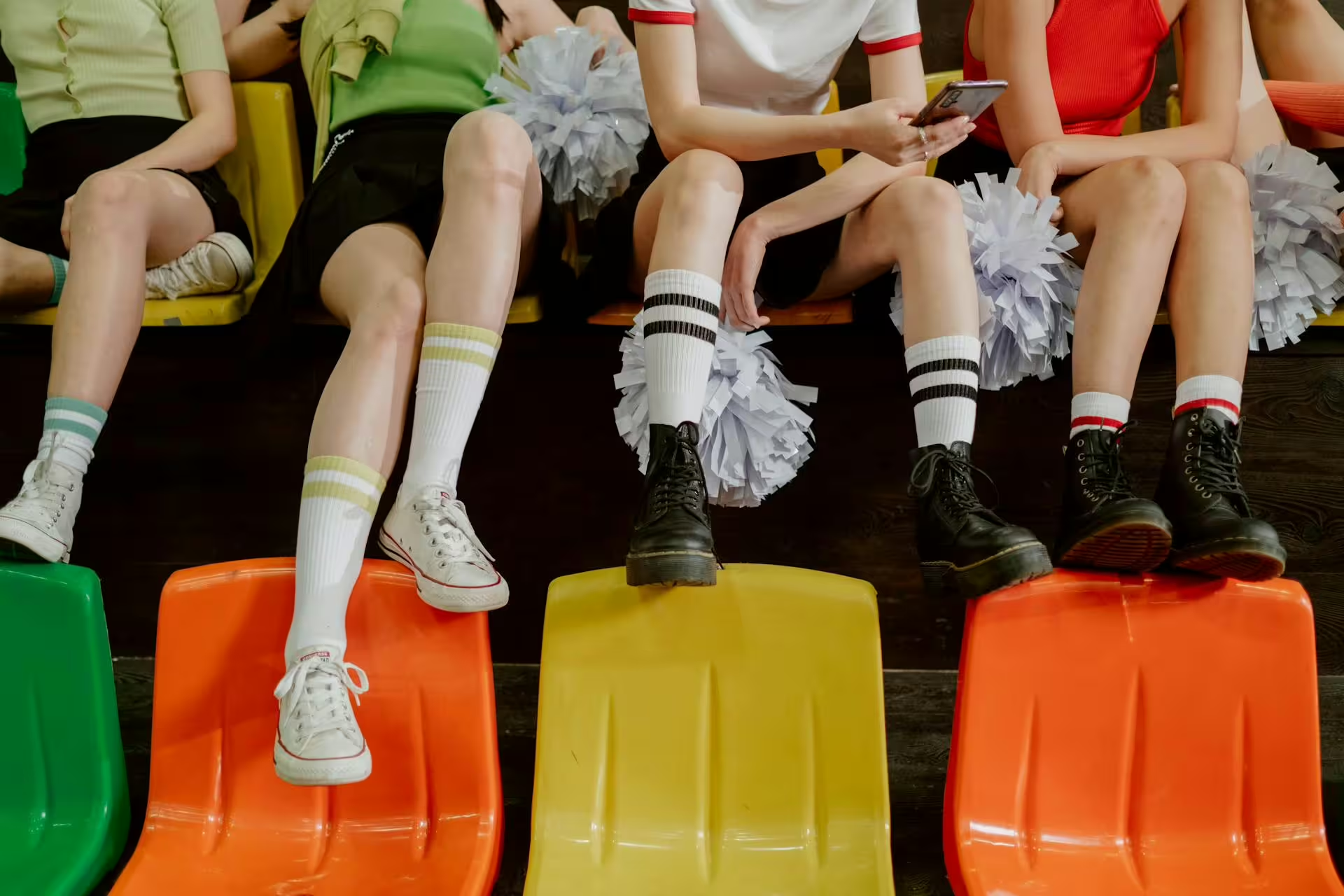When it comes to sports, we often discuss the broader picture. We talk about sports categories, specific sports modalities, or even the history behind the proliferation of certain sports. Every now and then, however, we at Cultured Athlete feel the need to home in on the basics; overlooked aspects of youth sports that contribute to a better experience overall. With that in mind, our subject today is one that you probably haven’t thought about since your child was in diapers; hand-eye coordination.
Believe it or not, hand-eye-coordination isn’t just important for throwing a soft rubber ball across the carpet, it is a fundamental skill for children at all stages of development—not just in sports, but in everyday life. It isn’s just about throwing and catching balls, either. Children with proper hand-eye coordination are better able to tie their own shoelaces and write with a pencil. And yes, they are a better batter and server when their hand-eye coordination is good, but that only allows them to have better confidence on the sports field; and that is only part of the equation.
The truth is, when it comes to improving one’s hand-eye coordination in a fun, active way, few sports are as effective as tennis. This is because of the pace, mostly. We’ve said it before, tennis challenges young athletes to react quickly, track fast-moving objects, and use precise timing—all while running, jumping, and swinging. It isn’t easy to get but once one gets the hang of it, any struggles they might have had in the area of hand-eye coordination, flies away with the next returned serve.
In this article, we will go over the basic elements that make hand-eye coordination so crucial for young athletes. We will talk about tennis, in particular, and how it can enhance that skill for children who play on the clay and those who do not. We will also offer parents an assortment of age-appropriate games and practices to enhance their child’s hand-eye coordination. It doesn’t matter your child is ready to be the next Venus Williams or just wants to get better at pitching a baseball, these essentials will help make them a better athlete.
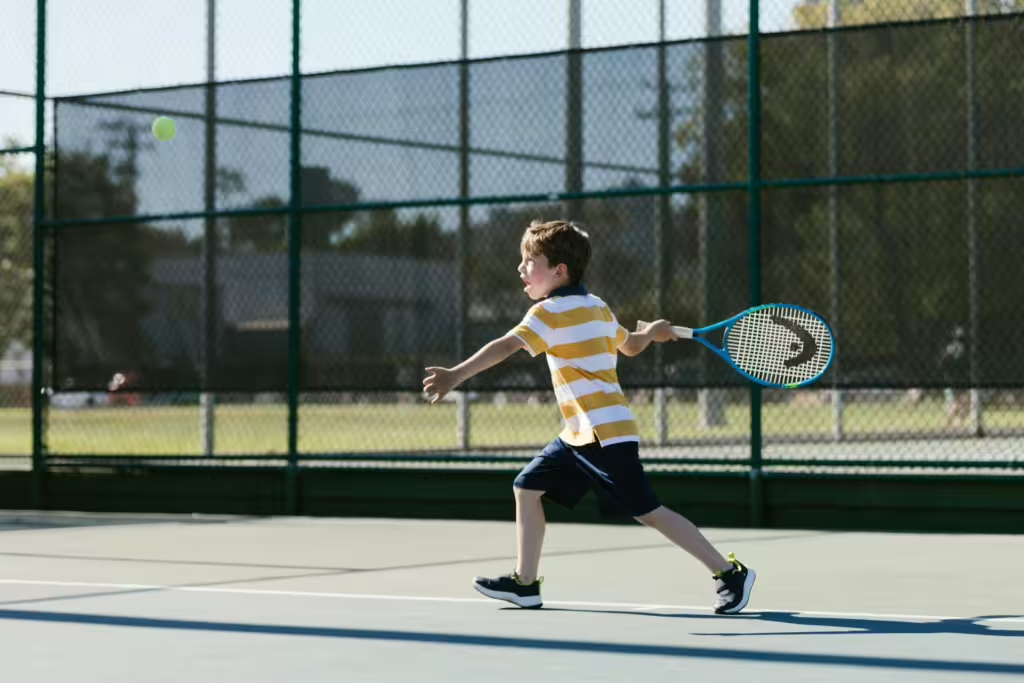
The Many Benefits of Hand-Eye Coordination
Hand-eye coordination is defined as a person’s ability to process visual input and respond with precise, controlled physical movement. This equates to matching up what we see with what we do with our hands and body. Parents who paid special attention to their baby’s developmental milestones will likely be very familiar with this concept, as it is essential for a wide range of activities. The most obvious of these has to do with gaming, so catching and throwing a ball. The others are more subtle, but no less important. Humans need proper hand-eye coordination to use tools and utensils, write, draw, play musical instruments, and even video games. This is why many children who do play a lot of video games tend to have excellent hand eye-coordination.
In tennis, the ability to see a thing and respond with one’s body is an essential part of the game itself. Every serve, rally, and volley demands real-time coordination between a tennis player’s eyes, brain, and muscles. In essence, children who develop good hand-eye coordination from an early age are more likely to succeed at sports such as tennis. Moreover, having the confidence to perform well in any sport can translate into other physical and emotional benefits. Those kids will often have better focus, social skills, and even show better academic performance.
Tennis: A Vital Tool for Improved Coordination
Many parents might think that tennis is a bit of a jump for improving a young child’s innate hand-eye coordination, but that couldn’t be further from the truth. It’s actually perfect for beginners. Think about it; the ball is small and fast, so the child has to work to track it with their eyes and time their returns perfectly. The racquet itself is a tool that introduces a layer of control, but it is also wide enough to allow for easy coverage if the ball is slightly outside the child’s range of motion. The field of play is large enough to require movement and footwork, but small enough to be able to focus on the upper body.
Finally, so long as the rules are simplified for young athletes, the game can be scaled down to meet their needs. This means larger balls, smaller courts, and lighter racquets. The simplicity of tennis is helpful too, as the game can be broken down into easier-to-digest drills or games; games that can be tailored to focus on one skill at a time, thus allowing kids to master the basics from the get-go.
Tennis Drills to Build Hand-Eye Coordination for Beginners
The following section is why the tennis drills presented here are so important to a the development of a child’s hand-eye coordination. The drills below are designed for kids ages 4–10, but they can be modified for older children or children with different skill levels. It should be noted that nearly all of them require the most basic of tennis equipment namely: a lightweight tennis racquet, soft foam or low-compression balls, and somewhere to play. The latter would ideally be flat ground, such as a driveway, gym, park, or tennis court.
Balloon Rally
The purpose of the balloon rally is to develops tracking, timing, and racquet control. Kids can use a junior-sized racquet to keep an inflated balloon in the air as long as possible, You can make the game a little more challenging by encouraging them to switch up racquet hands now and then. This is a slow game but it helps kids take the time they need to process the visual cues that come with racquet play. It also helps them reposition their bodies as they drill. It is is ideal for beginners because its fun and low-pressure.
Bounce and Catch
The bounce and catch drill can be done with either a foam ball or a red-level tennis ball. It is meant to improve ball tracking and reaction time, as children learn to catch the ball in one bounce after it has been sent their way, You could increase the severity of the game by bouncing it off a wall and having the child catch it off the rebound. Eventually, you can move up to them using a tennis racquet instead of using their hands. The purpose of the drill is to have the child’s eye track the ball and the hand respond as quickly as they can to its new position. It is a test of hand-eye coordination and reaction.
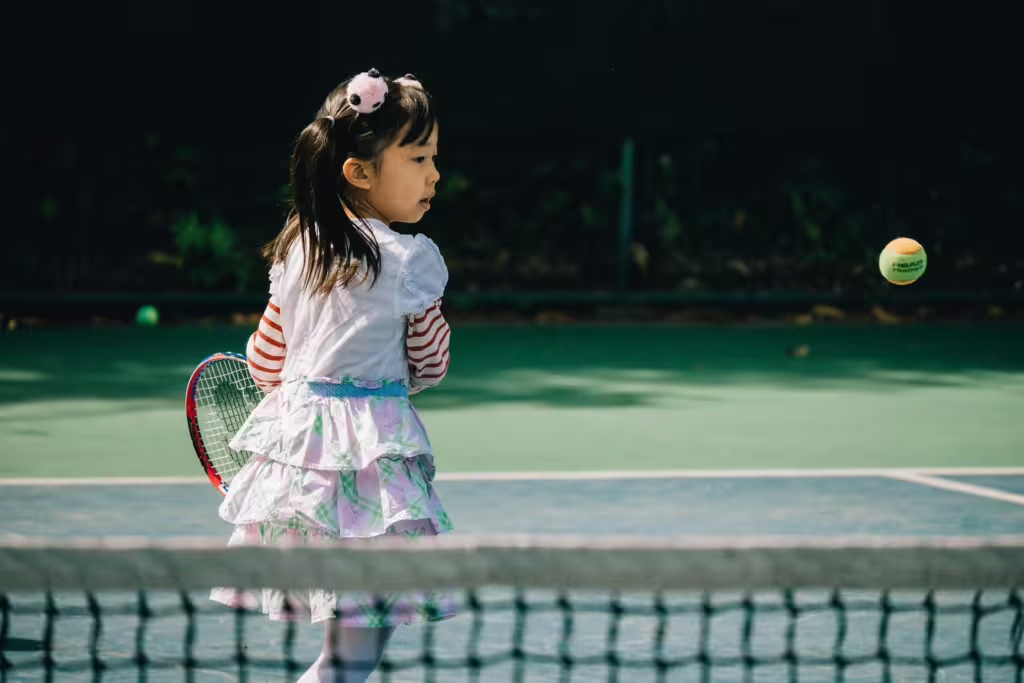
Racquet Tap-Ups
Racquet taps are excellent for building balance, rhythm, and concentration. This game helps children to build a feel for the racquet itself, its weight, its size, and how much force one needs to control the ball. This activity aids in fine motor control and racquet handling and can be done with a junior racquet and a soft tennis ball. Kids play by bouncing the ball up and down on the racquet’s face in a sort of dribbling motion. Have them try to do as many hits as they can, working up to 10 in a row and learning to alternate hands and walk while they practice.
Target Toss
Targeting practice is one of the most tried and true ways to improve a kid’s hand-eye coordination. It helps to builds aiming, prediction, and motor control and strengthens visual-spacial judgement. At the same time, the drill itself introduces goal-setting and self-correction into the equation. This drill can be done with cones, hoops, or drawn targets set at varying distances from where the player stands. Have the child toss the ball at each target, then hit it over with the racquet. You can even award points for accuracy as the child improves.
Parental Tips and Tricks
Tennis is just like any sport in that it can be frustrating for children when they aren’t used to it. As with most sports, if expectations are too high or the environment is too intense, they aren’t going to love it. That’s why the best thing you can do as a parent is to keep it fun and loose. Praise their effort, rather than their results and help them to set realistic goals for themselves. Also, remember to make sure they have the right size equipment for their age. Balls with lower bounce are better for younger kids, as are lighter racquets. Remember, the proper gear helps lead to success and success is what breeds confidence and motivation.
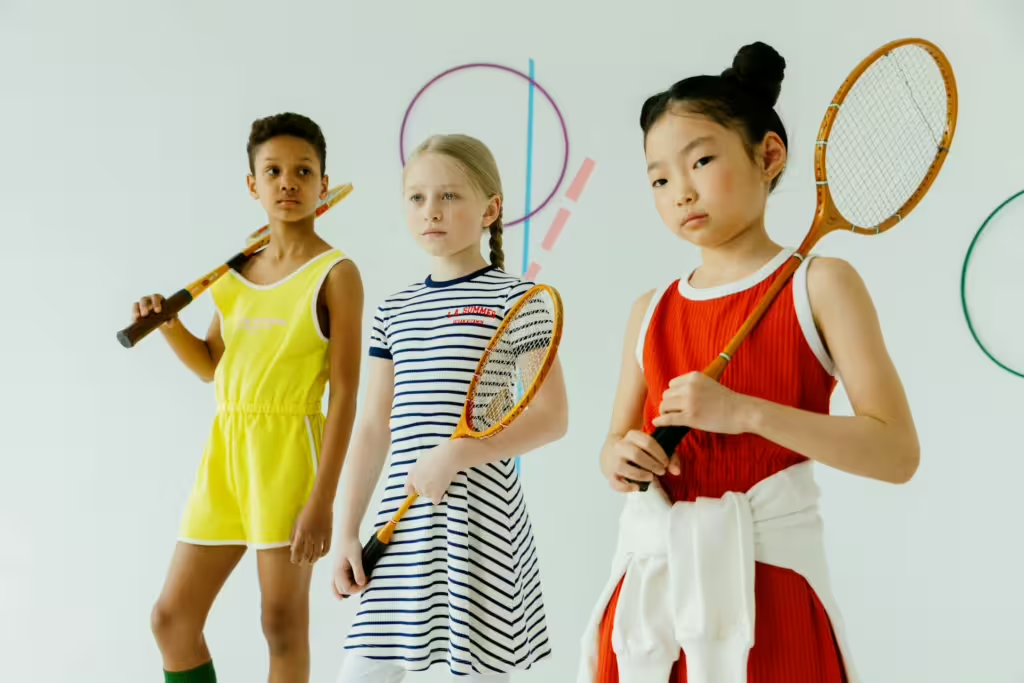
Cultured Athlete Says…
As you can see, tennis isn’t just a sport for the elite or even for older, more accomplished athletes. Tennis can help set a child up with an array of physical skills that will enable them to succeed at any sport that catches their fancy. Indeed, with the right drills and a supportive environment, tennis can help your child to develop hand-eye coordination in a way that’s playful, active, and never-ending. Even if they don’t end up sticking with it, the skillsets they learn on this court can take them to man others and instill a sense of discovery and fun that will provide for a lifetime of sports enjoyment.
Discover more from CulturedAthlete
Subscribe to get the latest posts sent to your email.

